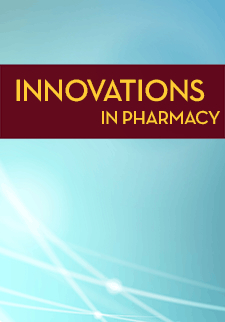Implementing a Pharmacist-Led Primary Care Pharmacogenomics Medication Management Service
Kathryn Taylor
Mayo Clinic Health System, Eau Claire, WI
Audrey Umbreit
Mayo Clinic Health System, Mankato, MN
Catherine Lea
Mayo Clinic Health System, Eau Claire, WI
Emily Holm
Mayo Clinic Health System, Mankato, MN
Kimberly Kosloski Tarpenning
Mayo Clinic Health System, Owatonna, MN
DOI: https://doi.org/10.24926/iip.v15i2.6178
Keywords: Medication Therapy Management, pharmacogenomics, primary health care
Abstract
Background: Pharmacogenomics (PGx) is a tool to guide optimal medication selection. Increased demand for personalized medicine and the growing occurrence of chronic diseases are drivers for pharmacogenomic medication management services. A review of implementation models identified a paucity of models delivering these services utilizing pharmacists in primary care. Standardization of this process remains a barrier to widespread implementation within health systems.
Purpose: Describe the process and measure the outcomes of developing an institutional guidance document and applying it to implement a pharmacogenomics medication management service at clinic sites within an integrated health system in the United States.
Method: A task force of pharmacists reviewed literature, guidelines, and institutional policies to create a comprehensive guidance document. The document included six minimum practice requirements for implementation in the primary care setting, and six additional recommendations. A retrospective chart review of all PGx visit types occurring from January 1, 2022 through September 30, 2022 was conducted.
Results: A pharmacist-led pharmacogenomics medication management service is now offered at all primary care sites within the health system. During the study timeframe, 1378 patients had a PGx visit, resulting in 1939 PGx visits. Of those visits, 1777 (92%) were referred by a primary care provider and 1675 (86.7%) were conducted by a primary care pharmacist. Twenty-nine primary care pharmacists offered the PGX service and 25 (89%) completed at least one visit. Patients were referred by providers from 56 of the 64 (87.5%) primary care departments.
Conclusions: Developing an institutional process and guidance document for the implementation of a new pharmacist-led pharmacogenomics medication management service at clinic sites within an integrated health system was beneficial in developing and standardizing the workflow. Dissemination of workflow expectations to the primary care providers and pharmacists resulted in adoption of the service.
Downloads
Author Biographies
Kathryn Taylor, Mayo Clinic Health System, Eau Claire, WI
Instructor in Pharmacy, Mayo Clinic School of Health Sciences
Audrey Umbreit, Mayo Clinic Health System, Mankato, MN
Assistant Professor of Pharmacy, Mayo Clinic School of Health Sciences
Catherine Lea, Mayo Clinic Health System, Eau Claire, WI
Assistant Professor of Pharmacy, Mayo Clinic School of Health Sciences
Emily Holm, Mayo Clinic Health System, Mankato, MN
Instructor in Pharmacy, Mayo Clinic School of Health Sciences
Kimberly Kosloski Tarpenning, Mayo Clinic Health System, Owatonna, MN
Assistant Professor of Pharmacy, Mayo Clinic School of Health Sciences



